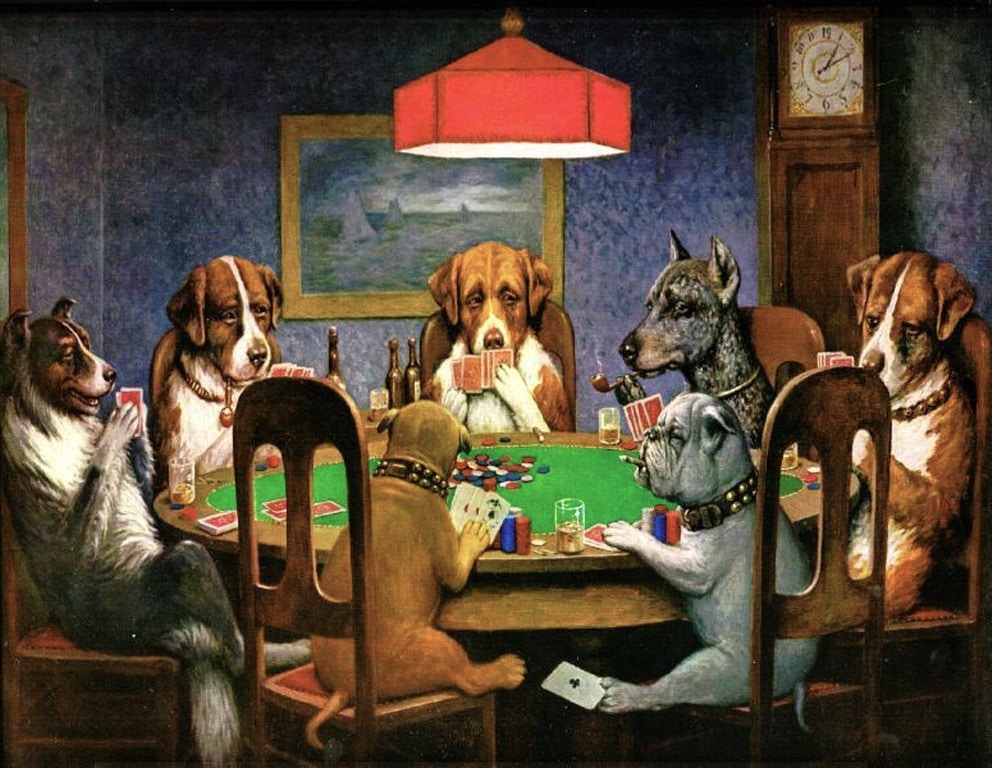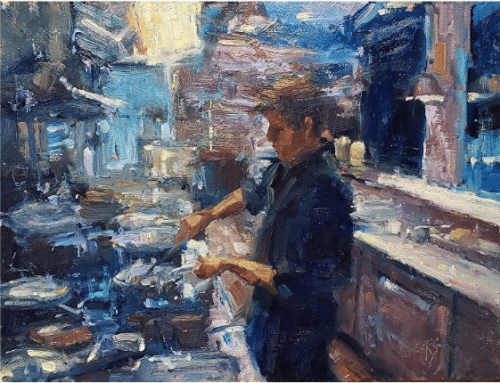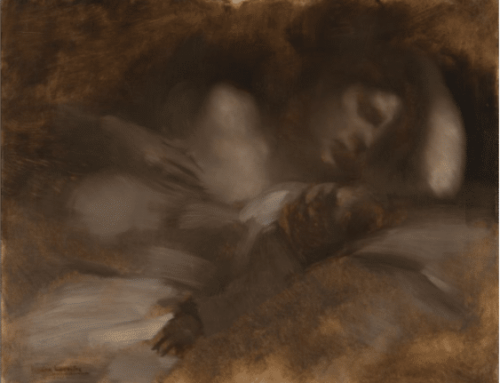C.M. Coolidge, A Friend in Need, 1903. (The original! One of a series of 16 often-imitated paintings of dogs playing poker, in this one the bulldog lends a helping paw to the aces-holding pooch to his left.)
My uncle Bobby has the all-time, best-kept secret to selling more paintings, even if they’re largely abstract: “Put a dog in it!” he says. “People love dogs in paintings!”
He’s not wrong. Dogs have had a prominent and popular place in art since ancient times.
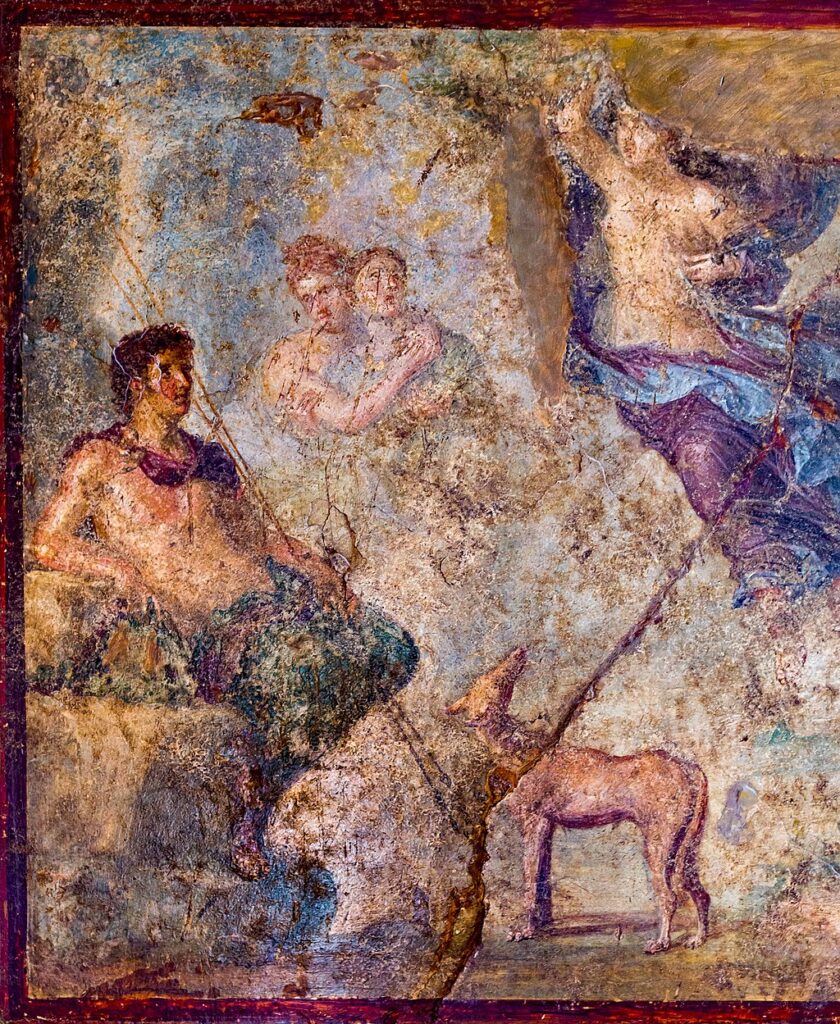
Endymion and Selene with a dog, House of the Dioscuri, fresco painting, Pompeii
A 2,000 year-old fresco from a wall in the ancient Roman city of Pompeii shows Endymion, a figure from classical mythology who fell in love with the moon, seated on a rock with his hunting dog standing beside him. The dog is painted with as much attention to detail and aesthetic stylization as Endymion or the figure of the goddess Selene (the Moon) they’re gazing at.
Dogs sit, romp, and roam throughout art history, especially Western art. As dogs became more domesticated, artists showed them as companion animals inside houses (or seated on women’s laps, a discreet way of alluding to sexuality). In painting, they came to symbolize fidelity, faithfulness, loyalty, social status, or alertness, guidance, or protection.
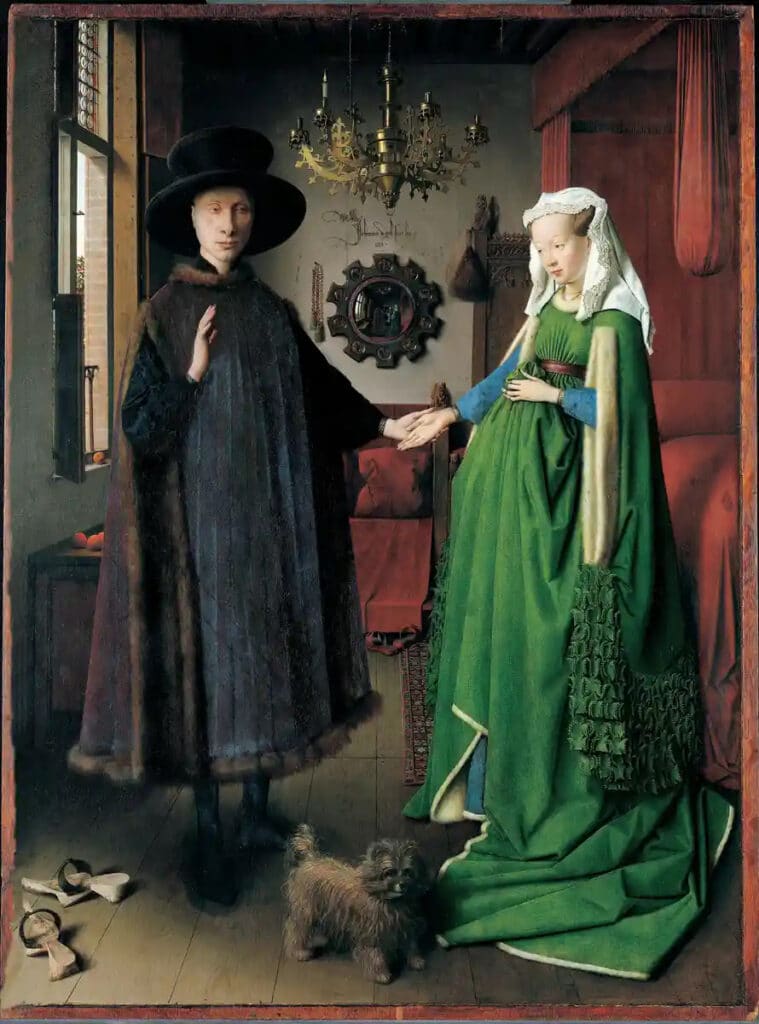
Jan van Eyck, Portrait of Giovanni Arnolfini, 1434
Perhaps one of the most famous dogs in all of painting is the little wire-coated rat terrier at the feet of the man and woman in the Arnolfini Portrait above.
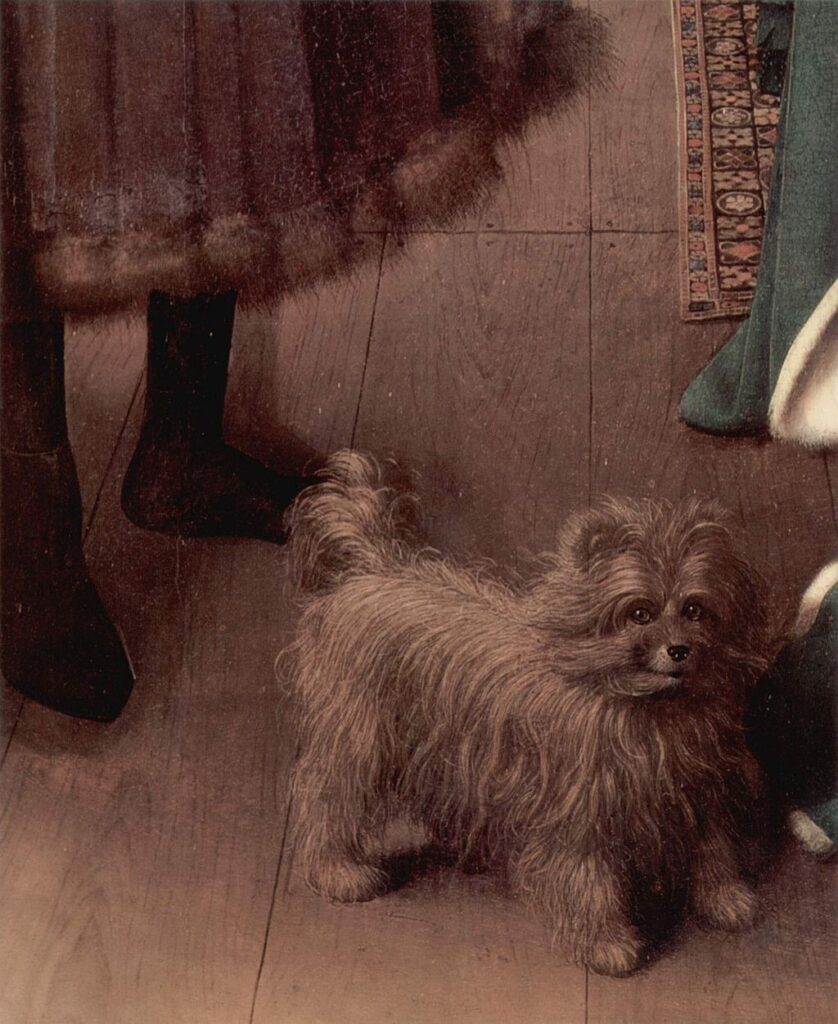
Jan van Eyck, Arnolfini Portrait, detail, 1434
The bright-eyed Arnolfini dog is thought to be an early form of the breed now known as the Brussels griffon (this breed is said to be “full of himself, brimming with self-confidence and gusto … bold, playful, stubborn, and mischievous.”) Art historians, who read this complex, symbol-laden painting as an allegory of marriage, have interpreted the dog as a symbol of loyalty, implying Mrs. Arnolfini’s future faithfulness to her husband.
Among other famous dogs in art is the Spanish Mastiff in Diego Velasquez’s Las Meninas, his famously enigmatic group portrait of the Spanish royal family and their retinue.

Diego Velasquez’s Las Meninas, 1656
The tougher and even-larger ancestors of this good-sized breed lived with the people of the Castilian Plateau at least dating to the area’s Iron Age, as evidenced by skeletons excavated in the area. (This one’s pretty placid though; it doesn’t seem to mind the child petting its back with a foot.)

Diego Velasquez’s Las Meninas, 1656, detail
During the Medieval period, the Mastín Español kept shepherds company during lengthy seasonal movements between pastures, defending their flocks from wolf attacks along the way. When farms and independent villages became more widespread, the mastiff moved indoors, where, as shown by Velasquez’s painting, they often received the royal treatment.
Dog portrayal and straight-up dog portraits became widely popular in the 18th century.
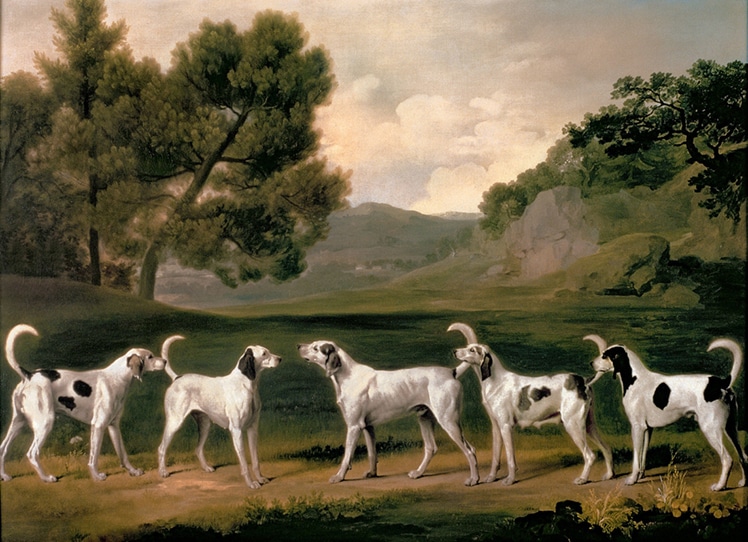
Five Hounds in a Landscape by George Stubbs, 1762
Wealthy aristocrats and royalty alike (Marie Antoinette comes to mind) enjoyed having their royal pets included in their portraits.
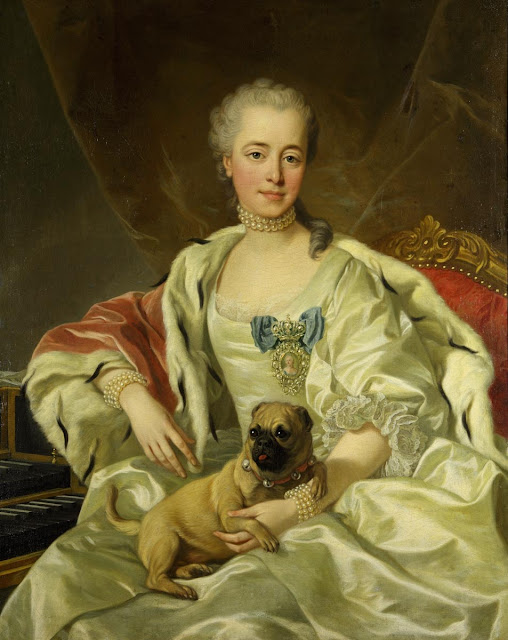
A portrait of Princess Ekaterina Dmitrievna Golitsyna by Louis-Michel van Loo, 1759
But just as often, the dogs themselves were the sole subjects of the picture.
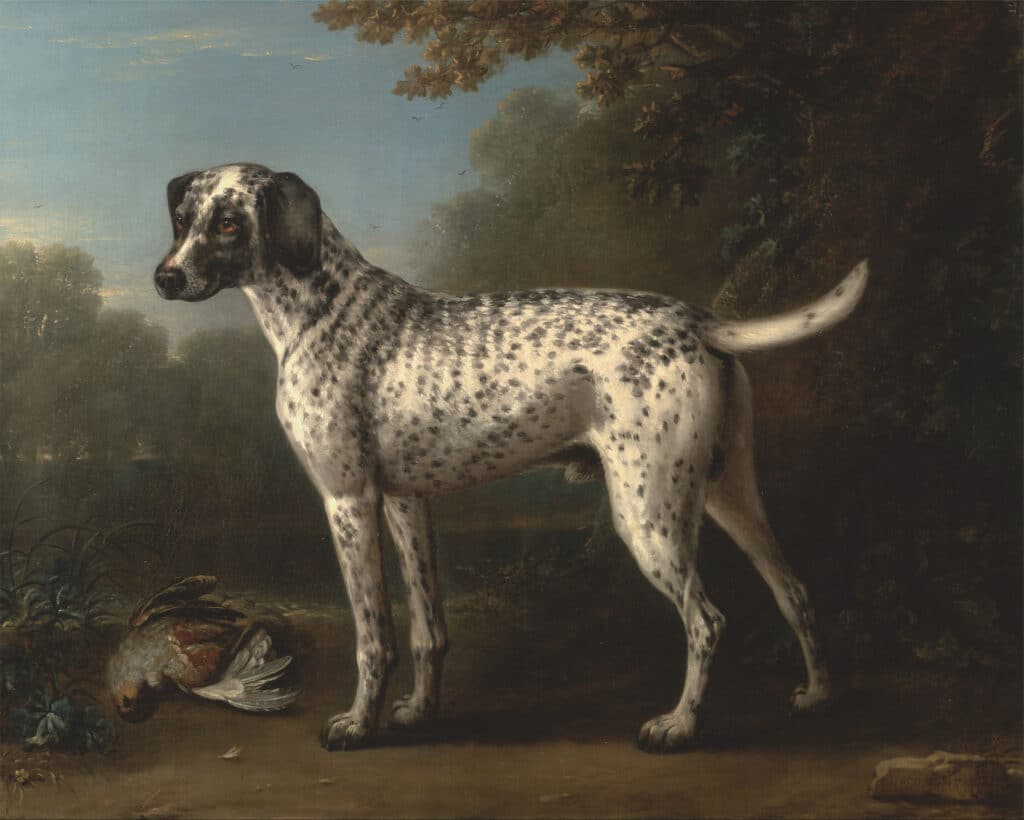
John Wootton, A Grey Spotted Hound, c. 1750
Artists have been painting portraits of beloved pets and faithful friends nonstop ever since.
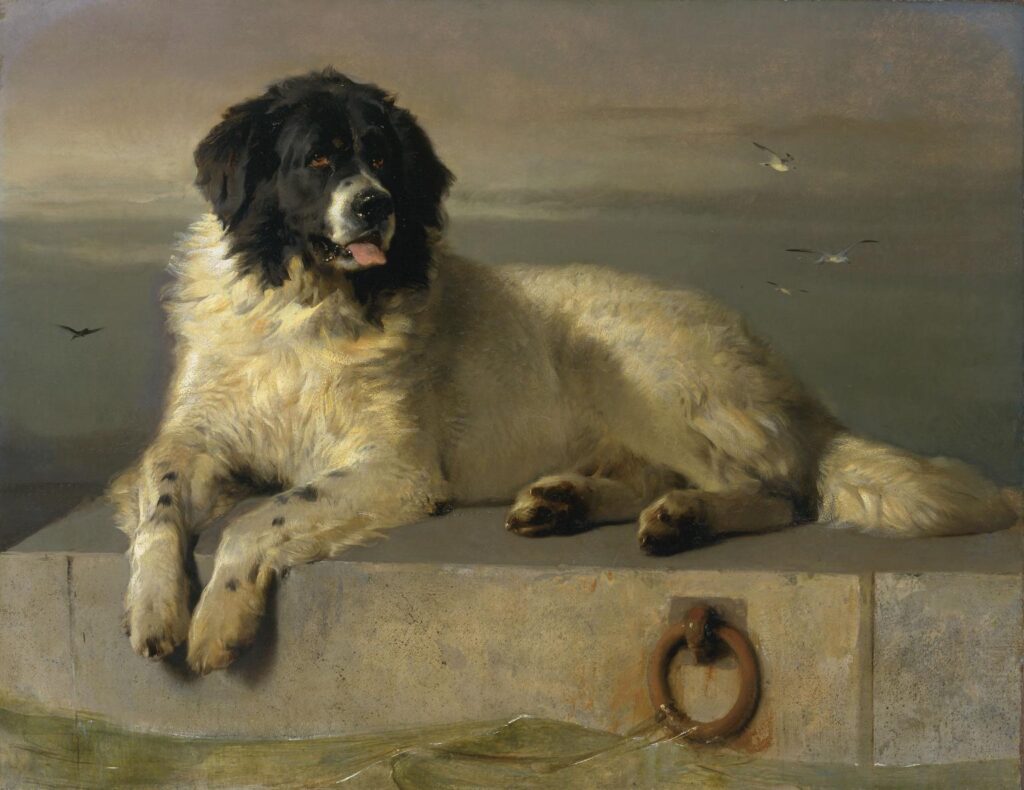
A Distinguished Member of the Humane Society exhibited 1838 Sir Edwin Henry Landseer (1802-1873) Bequeathed by Newman Smith 1887, now in the Tate
The portrait titled A Distinguished Member of the Humane Society depicts a well-known dog that lived 19th century London. The dog, depicted in 1838 by Sir Edwin Landseer (who, incidentally, painted many superb dog pictures), was a Newfoundland named “Bob” who was found in a shipwreck off the country’s coast. After his rescue, the canine survivor found his way to the London waterfront, where he became known for saving people from drowning a total of 23 times over the course of 14 years.
For this, he was made a distinguished member of the Royal Humane Society, granting him all the rights and privileges thereof, as well as a medal and free meals for life. Newfoundlands with white patches are now recognized as a breed of their own, the “Landseer,” named for the artist of this famous painting.
Dog portraiture remains a hugely popular branch of painting to this day. Teaching artists such as renowned animal painter Johanne Mangi share the specialized techniques in detailed videos such as The Fine Art of Painting Dog Portraits.
Watercolor & Pastel
Perhaps the most famous watercolor dog painting is Winslow Homer’s boatful of beagles and retrievers waiting for the start of a duck shoot.
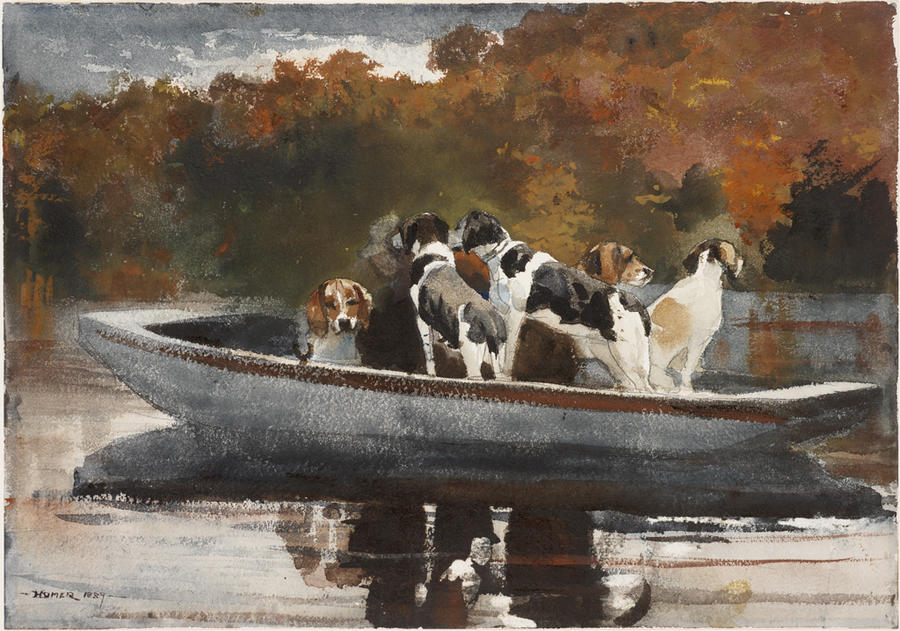
Winslow Homer, Hunting Dogs, Waiting for the Start, watercolor 1889. RISD museum
Homer frequented a hunting lodge in the Adirondacks (partially visible in the right-hand background?). In this painting, Homer uses color to relate the backdrop of autumn leaves to the foreground ripples in the water and the other rusts, ochres, umbers, and blacks of the hunting dogs’ coats. The hounds, all anticipation and attention, seem alert and ready for anything – all that is except for the one facing us with that composed, seen-it-all look that dogs sometimes get (all dog owners have seen this look, and who can blame them really).

Pablo Picasso, Boy with Dog, 1905
Dogs occasionally get equal billing with humans in very evocative art. This 1905 Picasso, done in pastel and gouache on cardboard, links the canine’s vibe with the boy’s; in both the dog and the child, Picasso brilliantly captures a timeless quality teetering between youthful vulnerability and street-tough resolve.
The artist made this picture during his so-called “Blue Period,” a time when he probed the human condition through sympathetic, deeply psychological depictions of homeless men and women, street performers, and others on the fringe of society. In this work, Picasso’s scruffy pup shares center stage with the painting’s human subject.
Picasso had his own dog, by the way, a beloved dachshund named Lump.
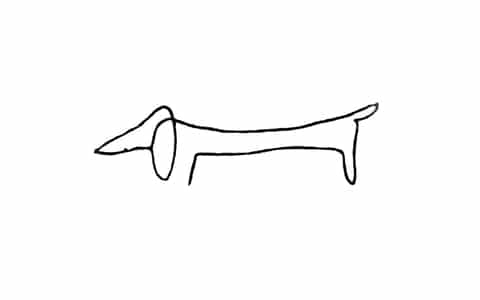
Pablo Picasso, Dog, c. 1955
He titled his abstract portrait of his pet simply “Dog.” I think he got the very essence of the animal and with incredible minimalism, don’t you?
Can’t get enough of dogs in art? There’s a whole pack out there! You can browse one large and well-curated collection right over here.
Ancient “Beware of Dog” Mosaic Restored
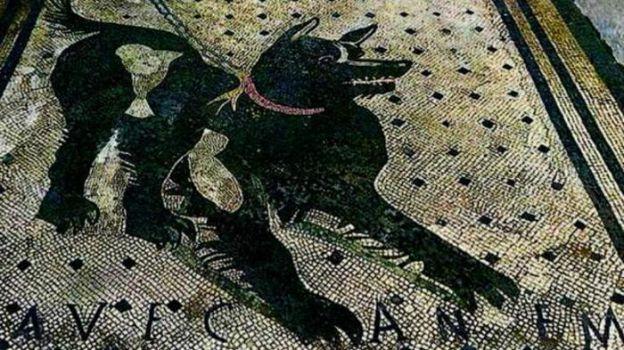
Restoration and excavation is still ongoing at Pompeii, the ancient city famously preserved in ash by the volcanic eruption of Mount Vesuvius. Newly restored is a well-known dog mosaic found in the vestibule of the Domus of the Tragic Poet.
“The mosaic picture of a domesticated dog, leashed and chained, with the words “cave canem” (beware of the dog) written under the animal, greeted (or, well, warned) visitors upon entering the house,” says the tourist bureau.
“The figure served as protection over the more private quarters of the 2nd century BC Roman home, one of the most famous at the site thanks to its elaborate mosaic floors and frescoes depicting scenes from Greek mythology.” For more on the “Beware of Dog” mosaic and Pompeii restoration project, you can find the rest of the story on Italy Magazine.
In the paint,
Chris

